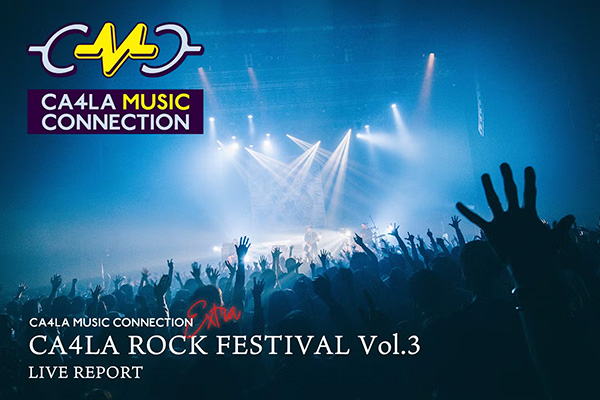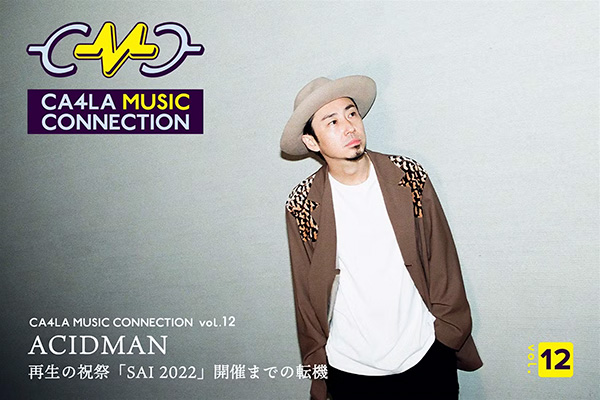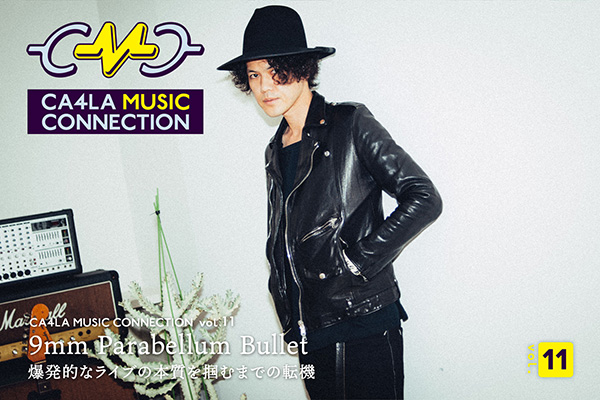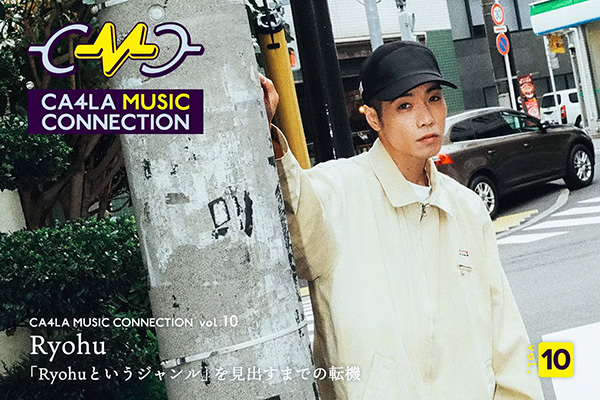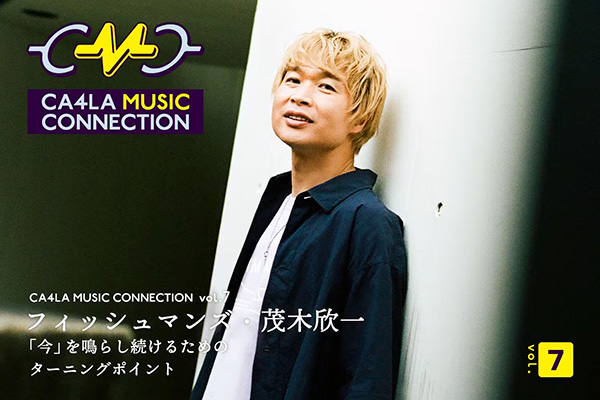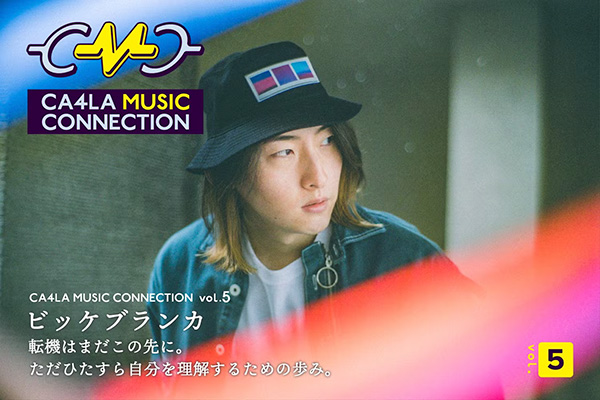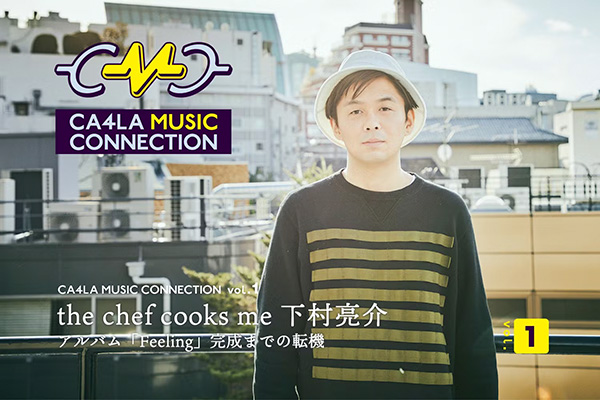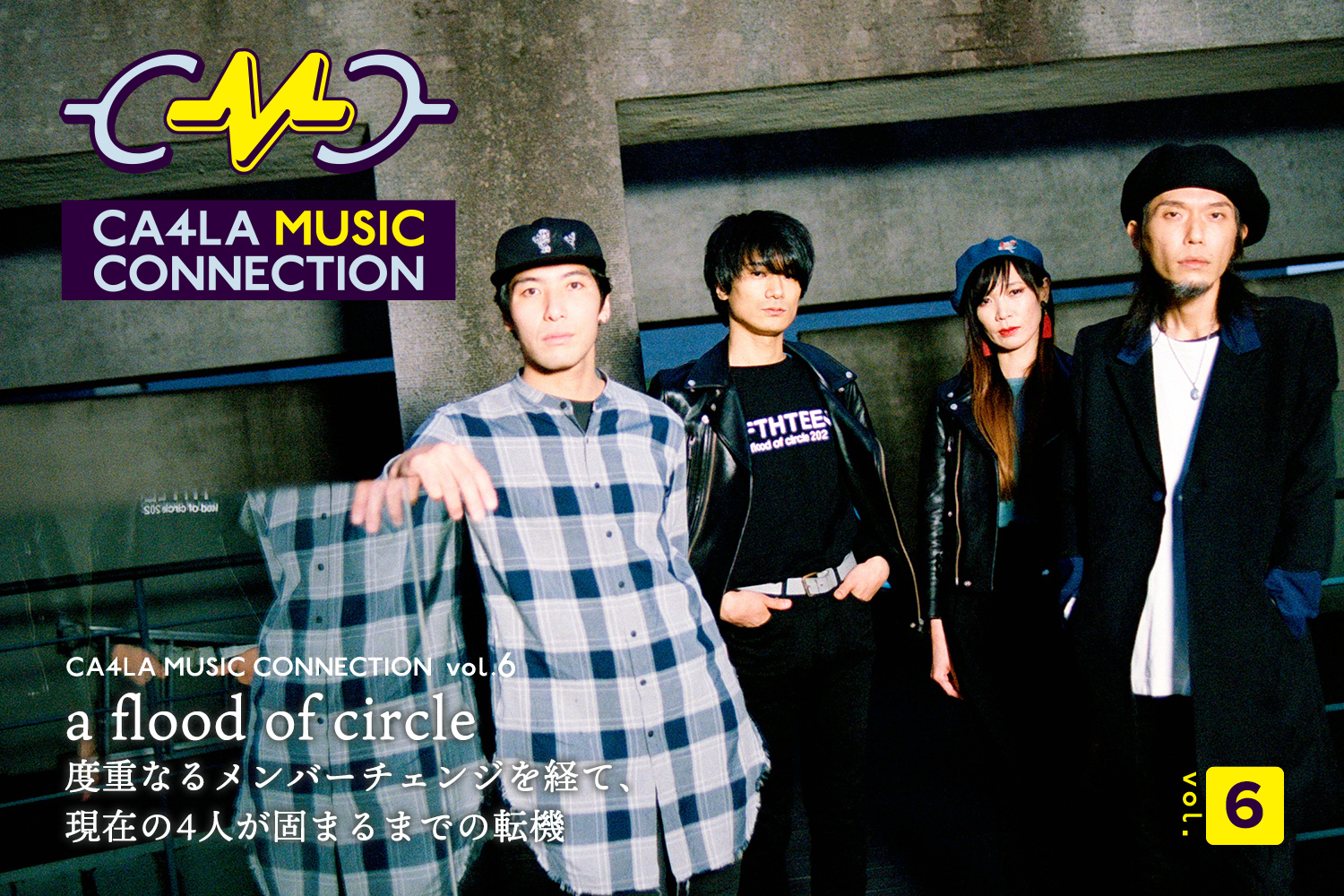
CA4LA MUSIC CONNECTION vol.6
a flood of circle
After many member changes, the turning point until the current four members were solidified
For artists, there is always a turning point in the process of creating works and the source of their activities.
"CA4LA MUSIC CONNECTION" is a series of projects where artists will be interviewed about what turned out to be a turning point in their own activities.
The artist appearing in the 6th episode is a flood of circle.
Formed in 2006, a flood of circle, which is celebrating its 15th anniversary this year, was a hot topic as a promising rock band since their school days, and made their major debut in 2009, right after graduation. However, they experienced a series of member departures, and although bassist HISAYO joined in 2010, they were unable to settle on a guitarist, and there was a time when they were known as a band with many member changes. However, with the addition of Aoki Tetsu in 2018, the last piece was finally filled in, and last year's release of ``2020'' was a great rock album that seemed to further renew the band's royal road. Now that they are in such a fulfilling period, we asked them again about the thoughts behind the member changes, and also about the collaborative beret with CA4LA, which will be exhibited and tried on at the ``a flood of circle FIFTHTEEN EXHIBITION'' to be held from May 1st.
Text by Atsutake Kaneko
Photo by Kana Tarumi
Interview:a flood of circle

"It's really nice to see a band doing things together, helping each other out and forgiving each other," says Sasaki.
Kazuoka Watanabe (hereafter, Watanabe): I think rock bands that I think are cool don't have any particular conditions, but are natural, or rather, natural. Also, I don't really like tragic feelings, so if I had to give a condition, I guess it would be that they live naturally. I don't think it's okay if they don't behave like rock stars. I'm not a delinquent or anything, and I like fishing and saunas, so I guess there's that kind of rock (laughs), and I think living your own way like that is what makes a rock band.
HISAYO: I think things like "I admire this kind of band image" change from time to time, rather than being something that has always remained the same and I want to be like that, but what I think now is whether we can continue doing what we think is interesting. If we get bored, I feel like that will be transmitted to the outside world, but instead, it would be ideal if people around us could see that we're doing something interesting, and we could continue to think that way ourselves.
Ryosuke Sasaki (hereinafter, Sasaki): I think I also had an idea of "I wish the band was like this" in the past. But when I started my own band and started to roll, I realized that it's better not to have ideals (laughs). I just had to look for something better than yesterday in each moment. If you try to fit it into your ideal, more and more places will not fit, and it will eventually fall apart, so you just go with "Oh well, whatever."
Aoki Tetsu (hereafter, Tetsu): I think it's simply that they all look cool. Also, the people in my favorite rock bands don't seem to post pictures of their meals on social media. It's a completely personal preference, though.
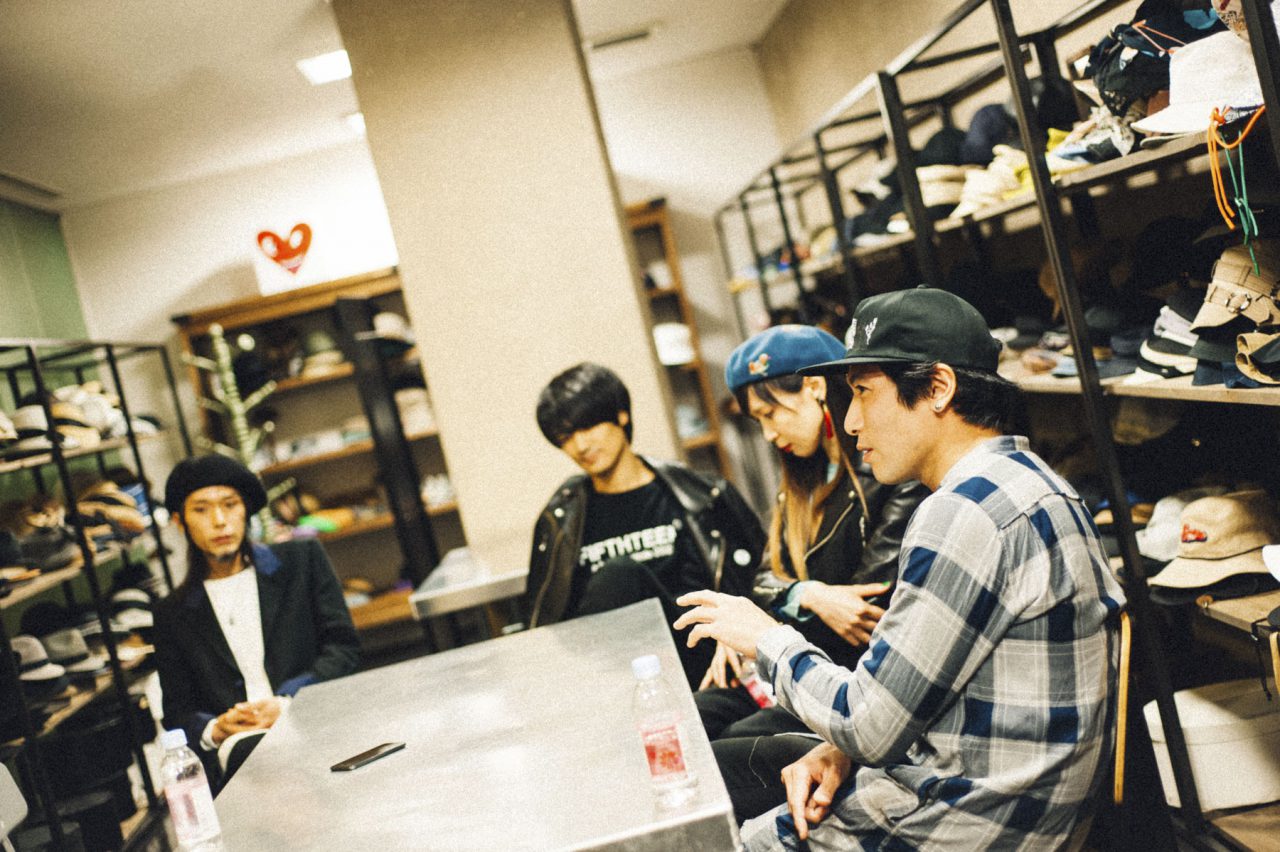
HISAYO: When I was a university student and formed Tokyo Pinsalocks, we were four girls at first, but I vaguely thought, "No matter who gets married or has children, we'll always be together as four," like overlapping the story of the band with our lives. But by the time I joined Flood, I was no longer in a position to do that, and my thoughts had become more varied.
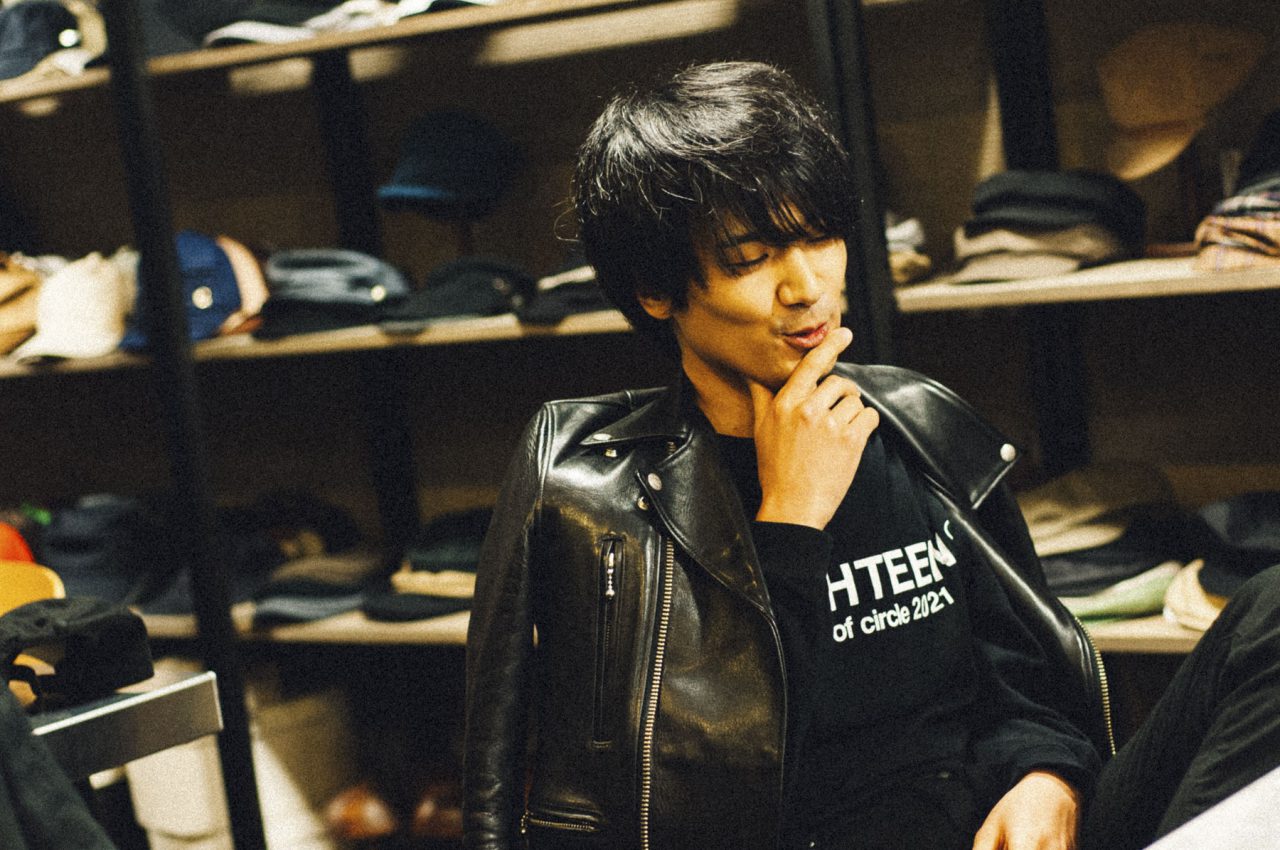
Sasaki: There are bands that say "If someone leaves, the band will break up," and there are bands that continue as THE BEACH BOYS even though none of the original members are still there, so I think it's fine that it's either way. Of course, I think there was at the beginning. Just like what my sister said, we formed as the same age, and we had a dream, so we said, "Let's go with these members." But in reality, it was more casual, and we didn't put our arms around each other and say, "Let's do it!"
Sasaki : I didn't understand how difficult it was to make a living as a band when I was about 20 years old, but now I understand the feelings of bands that fall apart. But it's nice to see bands that somehow manage to get by while helping each other out and forgiving each other, saying, "That happens."
"I had no intention of starting a new band, but by chance I met Sasaki in the neighborhood, and I felt like he was pushing me to give it a try." (Hisayo)
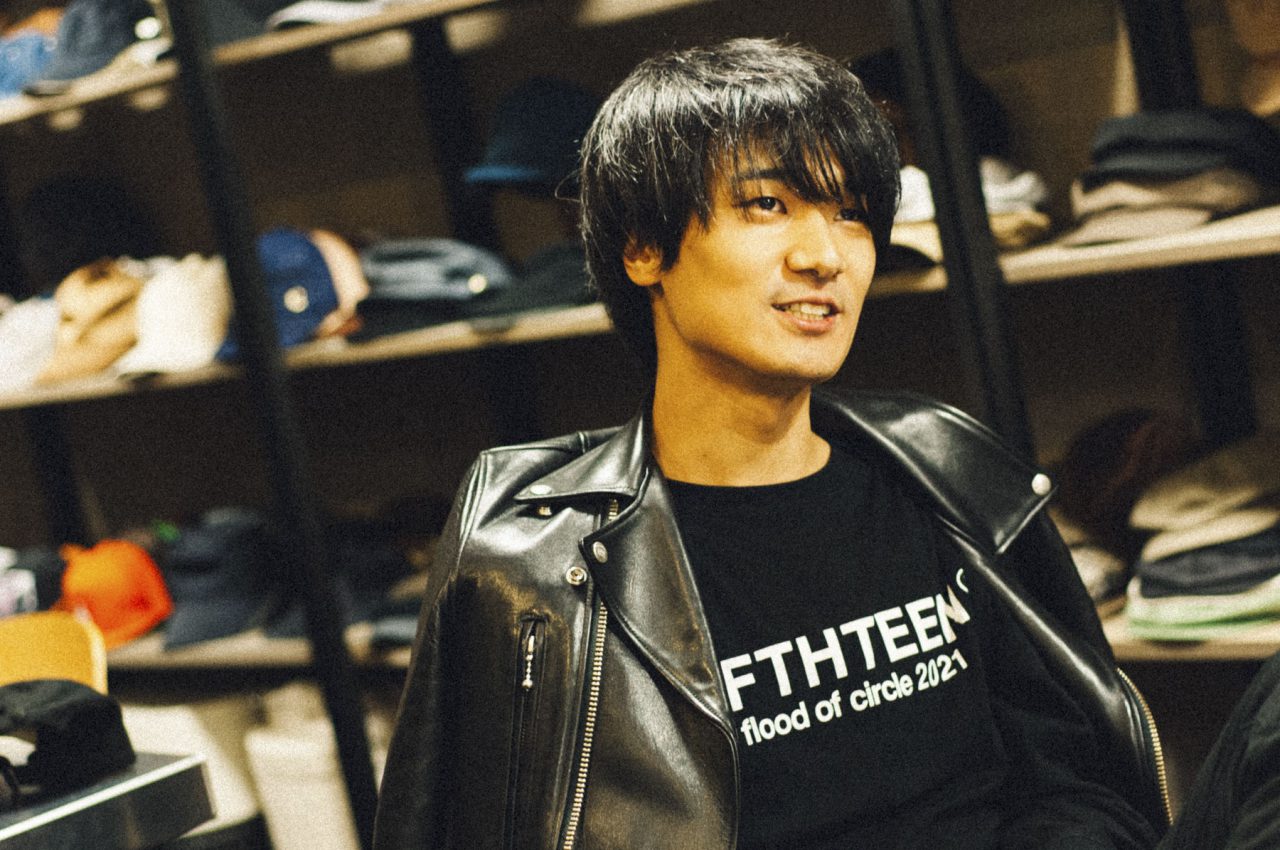
Sasaki: From the time our first guitarist disappeared, we were working on a very tight schedule. The people at Victor, where we were affiliated at the time, supported us and we were able to quickly make our second album, but we were always arguing and fighting during recording and live performances... so I guess they got tired of it. So at first, Nabe-chan and I were talking about "Let's do it even if we become THE WHITE STRIPES" (laughs). However, when we decided to look for the next bassist, saying "We've come this far," our manager at the time suggested, "Wouldn't it be cool if HISAYO was in Flood?"
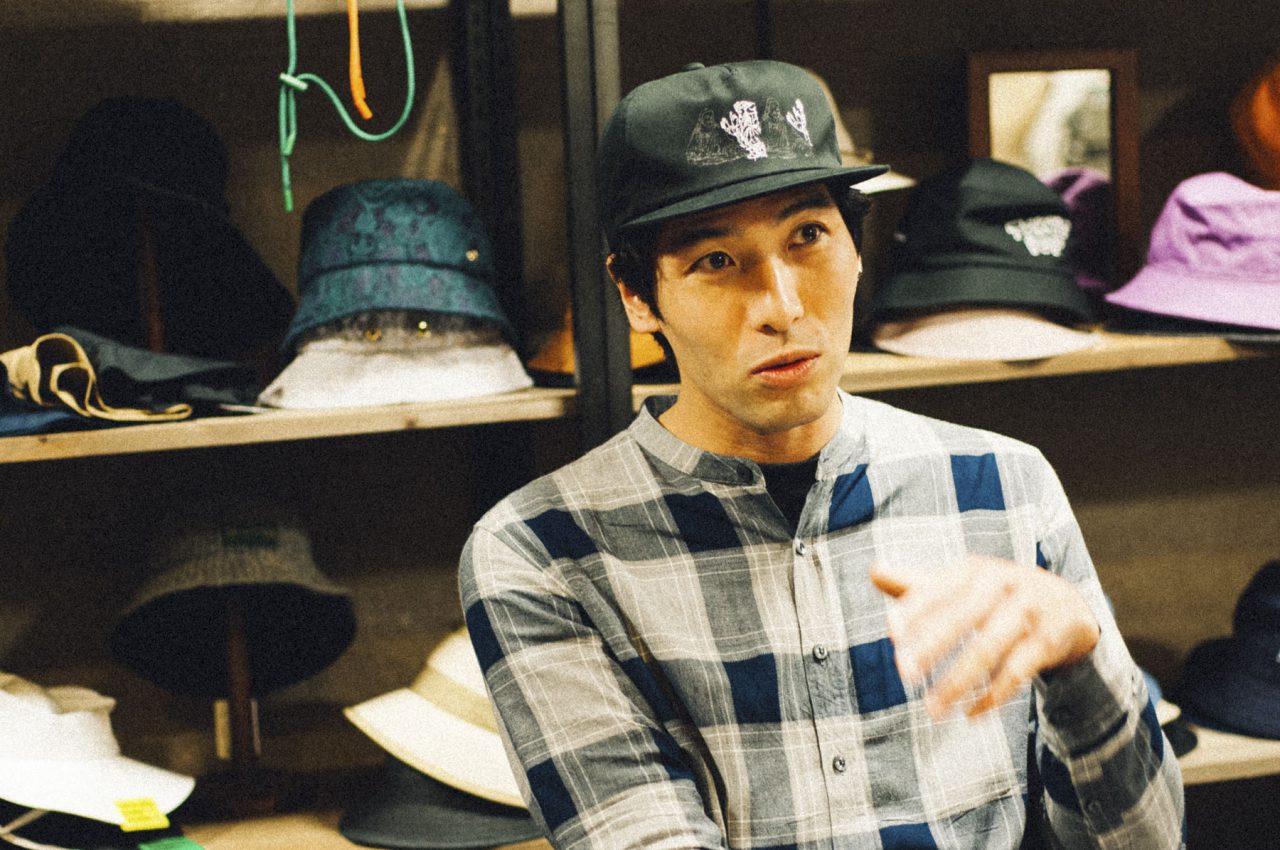
Watanabe: I was not that mature at the time, so I'm ashamed to say that I didn't really think about it. At the time, everyone on the team was on edge, and there was no one who could see things from an outside perspective, so I was gradually being sifted out, and I felt like I was living in a world of values like "who can keep their foot on the gas until the very end?" (laughs).

HISAYO: At the time, I was in Tokyo Pinsalocks and GHEEE, and both were touring and moving around a lot, so I thought that even though I might support them, I wouldn't add any more bands. So when I first heard about Flood, I thought it was just a support, so I said, "Yes, I'm okay with it," but they said I'd be a member, so I turned them down. But then we had various connections...I met them by chance near my house (laughs).
HISAYOAt that time, Nabe-chan and I happened to be living in the same neighborhood.
Watanabe: I had no idea about it, but actually I live about a seven-minute walk away.
When I was walking around my neighborhood with HISAYO, I met Sasaki who was going to Nabe-chan's house. I thought, "There's a guy who looks like he's a flood walking by," and he said, "HISAYO!" At that time, we had already decided to do a session at the studio, so he politely greeted me and said, "Please do a session with me next time"... I thought he was a nice guy (laughs).
Watanabe Ryosuke has only come to my house about four times in the last 15 years.
HISAYO: So I thought, "Is this what I'm supposed to do?" Tokyo Pinsalocks was a girls' band, and at the time we were talking a lot about our futures, and we knew that it would stop someday when we thought about marriage and children. But I wanted to make it in music, and I was a little confused about whether it was okay to keep pushing everyone else to do it. At that time, I heard about Flood, and we happened to meet in the neighborhood, and although I had no intention of starting a new band, I felt like I was being pushed back to "give it a try."
HISAYO: It was a huge turning point for me. If I hadn't met you by chance that day, I might not have joined Flood.
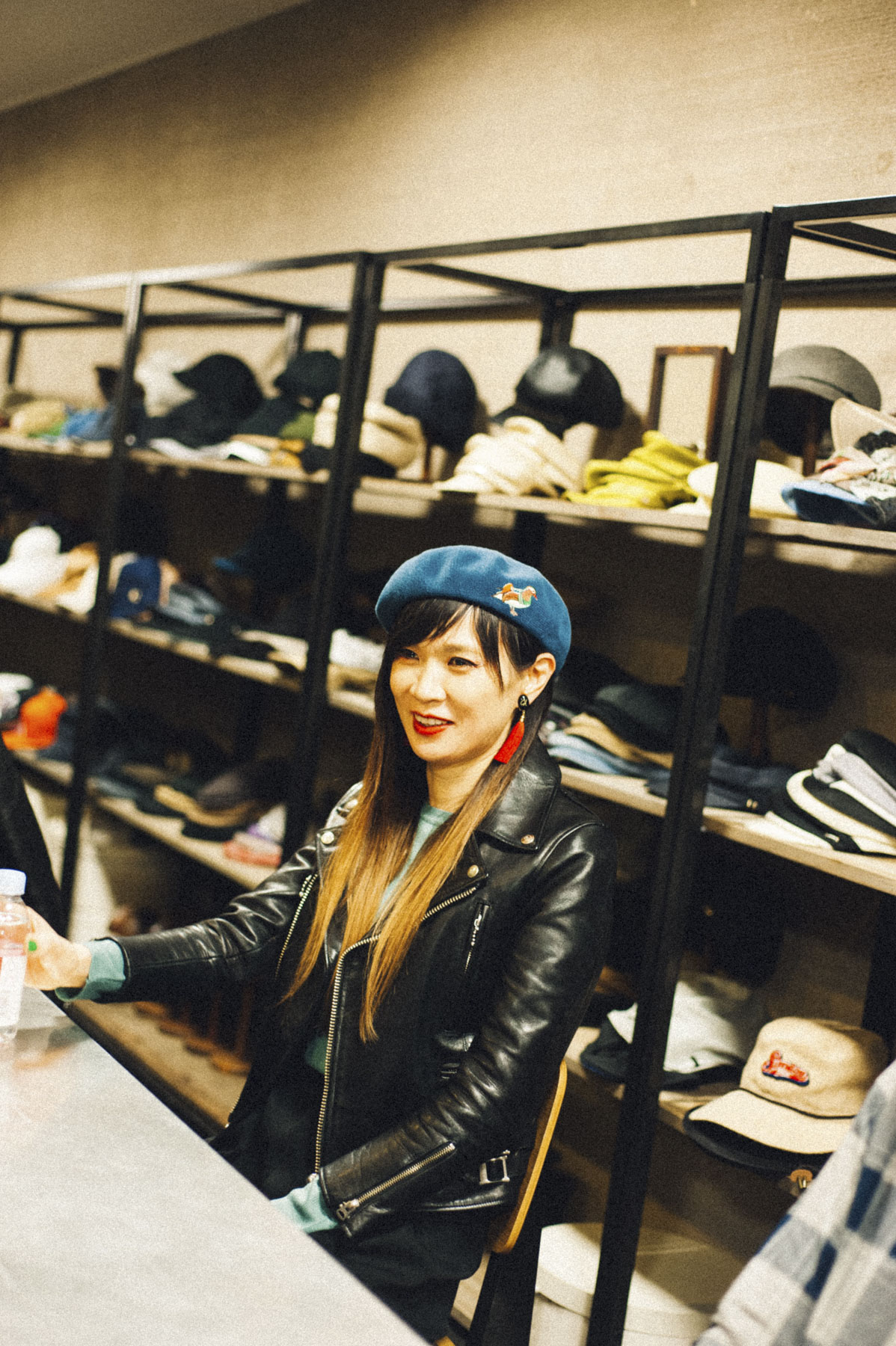
Sasaki: Another big thing was that the earthquake happened right after my sister joined us, and we were really worried about what kind of songs we should release as a band. My sister is from Kobe, so she experienced 1995, and we had a really deep conversation. The experience of overcoming that time together was huge, and the first album we made together with my sister, "LOVE IS LIKE A ROCK'N'ROLL," contains a lot of songs that we still play at live shows. The earthquake is not a positive thing, and the timing was really just coincidence, but by overcoming a negative situation together, we were able to build the foundation of Flood, which is to "play tough." It was a big deal.
"The bar for becoming a guitarist was pretty high, but I met Tetsu, who had a passion that surpassed that, and something miraculous happened." (Watanabe)
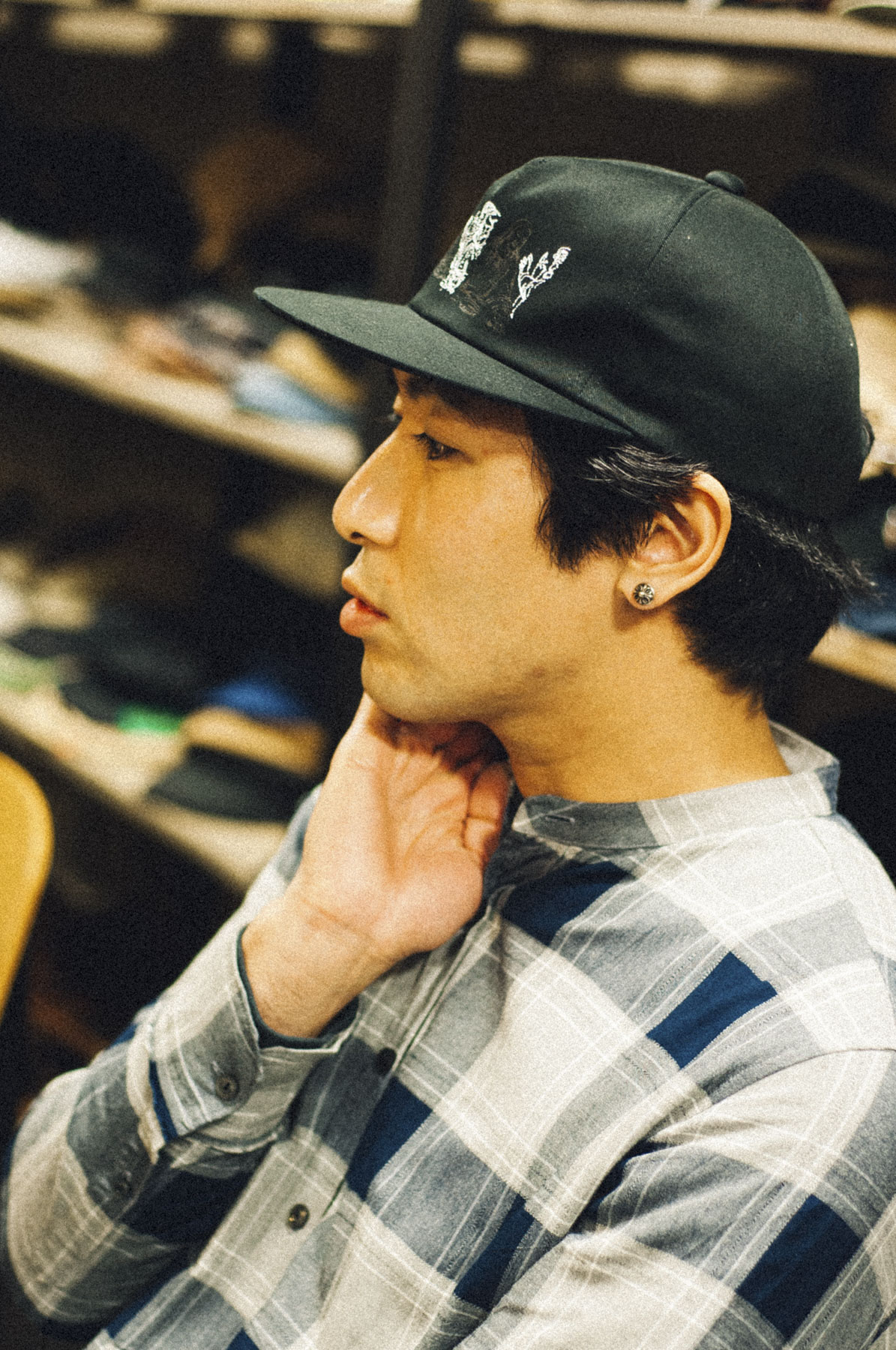
Sasaki: By that point, we'd had about 10 different guitarists, including support guitarists (laughs).
Sasaki: Right before that, Kyosuke from Bakudan Johnny was supporting us, and Bakudan Johnny's vocalist had disappeared. At the time, it wasn't clear whether Bakudan Johnny would make a comeback, and people around us were saying "Kyousuke is a good choice," but as Kyosuke continued with Flood, he realized that "I need to start my own band after all," and that's why he left. So next time, instead of getting help from someone in another band, I wanted to work with someone who wanted to be in Flood.
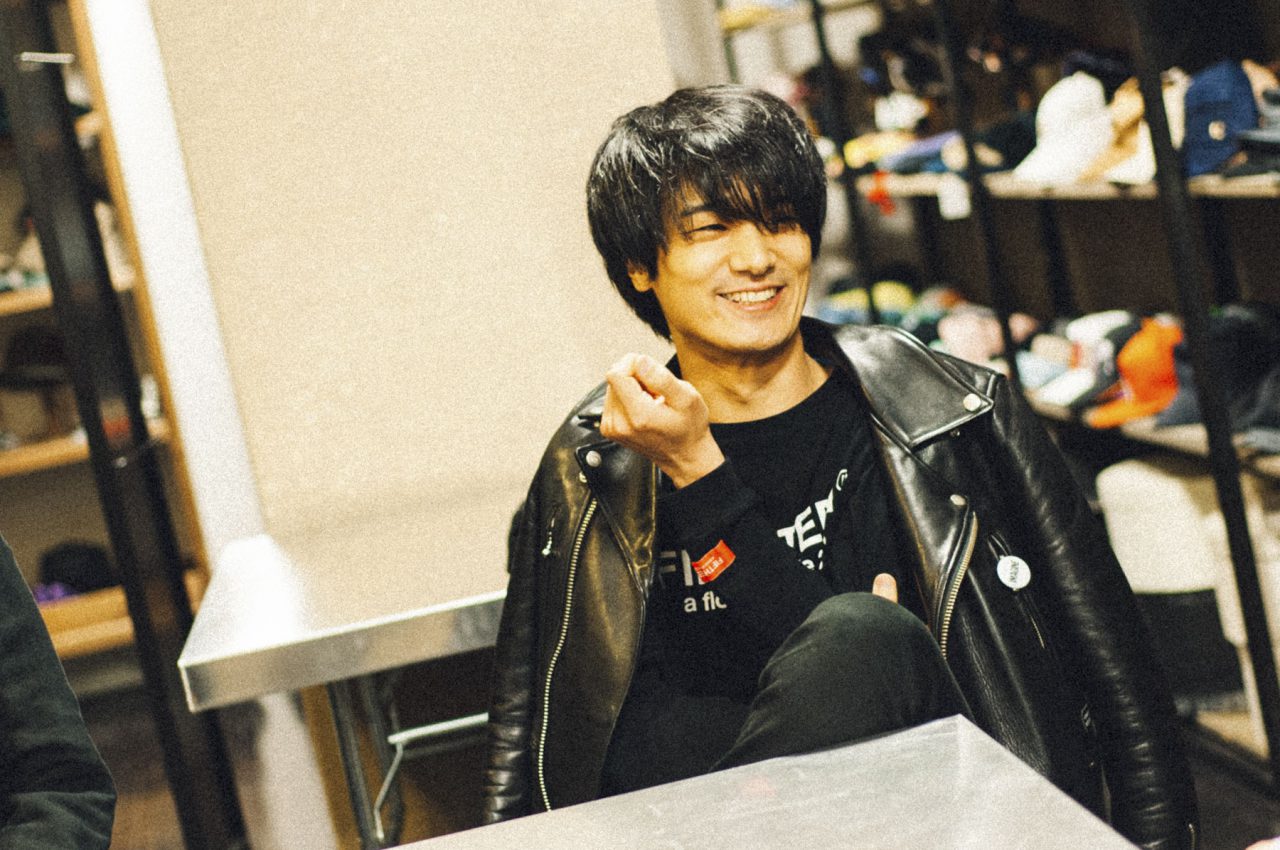
Sasaki: At first, I didn't think the words "open to the public" sounded very cool (laughs), but at the time I was in the mood to "do something that I'd never done before," so when I put out an open call, I got over 100 applications, and Tetsu was among them.
The band was in a really good state when Kyosuke Watanabe was in the band, so the bar was set pretty high, but I met Tetsu, who had a passion that surpassed that. I feel like something as miraculous as when my sister and Ryosuke bumped into each other in the street...I'm starting to feel really embarrassed saying this (laughs).
Tetsu: This year marks my fifth year in a band, but it's also been five years since I moved to Tokyo. For about two or three months after I moved to Tokyo, I wanted to start a band, but I wasn't doing anything in particular. Then I found an open call... I thought I was lucky (laughs).

Sasaki was lining up bowling pins.
I was working part-time as a mechanic behind a train lane. At that time, I saw a retweet from a junior at school and found out about the public recruitment, so he's the one I'm most grateful to (laughs).
Sasaki: We were in a state of "dating with the intention of getting married" (laughs). We wanted him to join, but we were also meeting Tetsu for the first time, so we kind of tested each other out, made an album, toured, and after about a year, we thought "this is good." With Duran, we suddenly made him a member, which was a mistake (laughs), so we reflected on a lot of things and took the time to make sure we were together, but we still had the premise that he would be a member.

Tetsu: From my perspective, it said "member recruitment" and I was accepted, so when they first said "support", I thought "That's not what they said!" Well, that's what they said, but when I heard about becoming a member, I was like "It's too late!" (laughs).
HISAYO said, he said. He called me out under a different name that time.
I heard it was a party to thank Tetsu for his hard work in recording...
HISAYO was surprised when he asked me to come in. (laughs)
"After fiveyears, I've come to understand what the core of Flood is, so I want to make that core even thicker." (Tetsu)
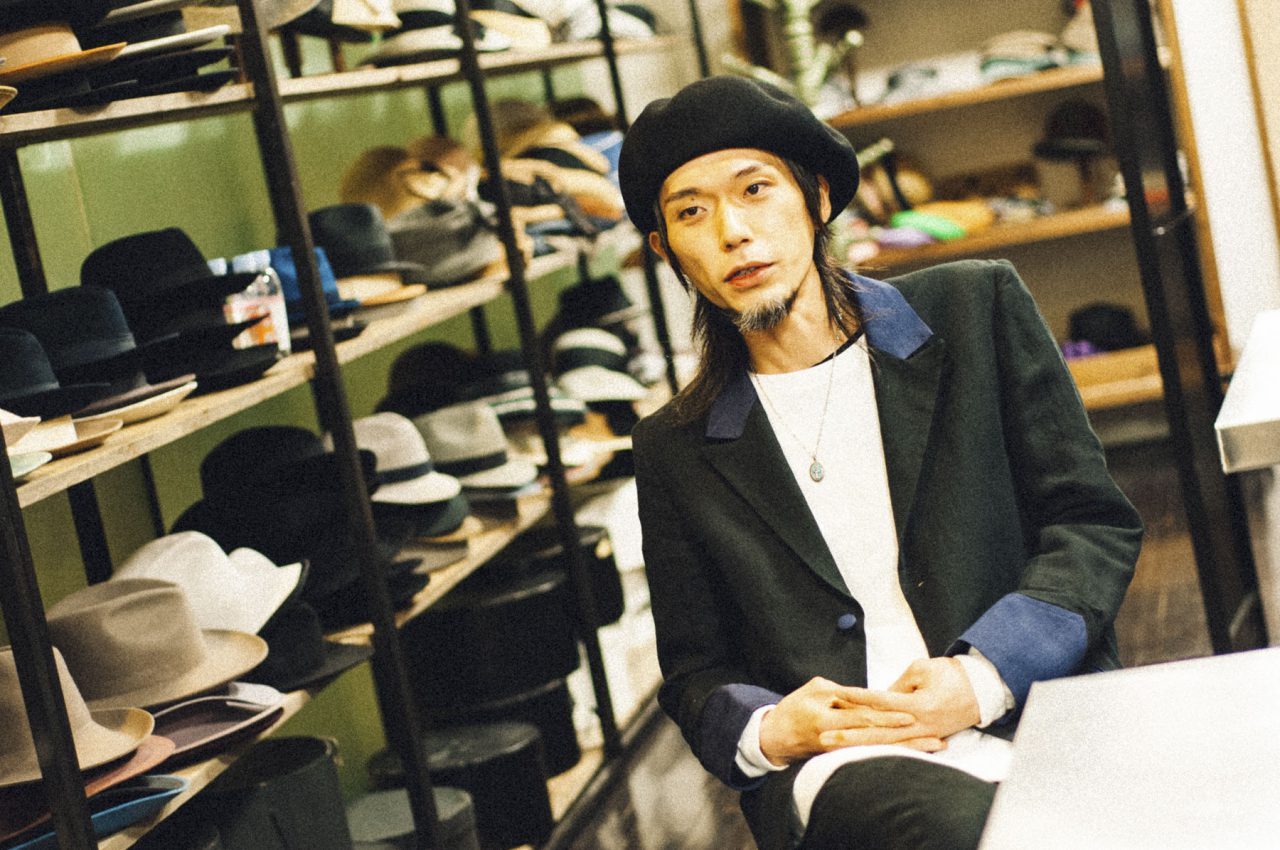
Sasaki: I don't feel like I'm being interviewed now because I've arrived somewhere in 15 years and something has been completed. I still feel anxious and like I'm struggling. But I feel like we're doing it together. Tetsu didn't join us in a completed state either, so I think it's great that we're doing it together as members.
Sasaki: I wanted to do trap music, so I pushed it on everyone (laughs), but when Tetsu joined, our live shows got a lot better, and I feel like Flood's strongest point is making the sound that the band naturally produces even cooler. So, now we're going in the direction of sharpening the weapons we have. Also, there are fewer rock bands around, so I thought it would be good (laughs). There are some seniors, but there aren't many bands of a similar generation that are doing similar things, so I think it's better to cherish our own style now.

Watanabe: Each of us has our own strengths and weaknesses, our own abilities and weaknesses, our own likes and dislikes, but among those, we also have something in common among the four of us, and I think that's what has become the sound of our recent albums. So, I want to take that common "1" and make it even bigger.
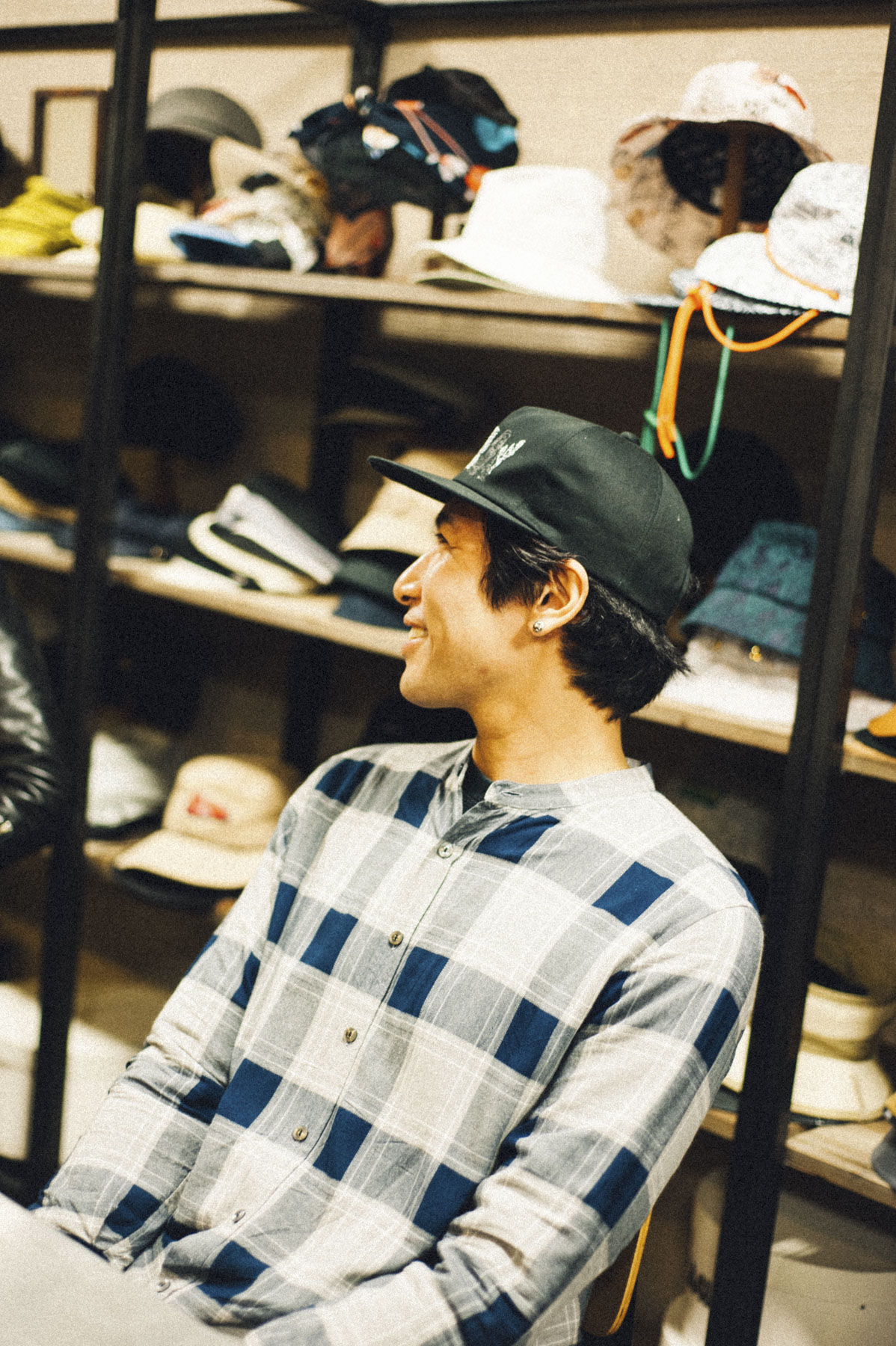
HISAYO: I don't think it's time to do anything about the negative aspects anymore. I think it's great that we can finally discuss the creative aspects together. Of course, as Sasaki said, I'm not finished yet, I think I'm still in the middle of it, so I'm looking forward to that.
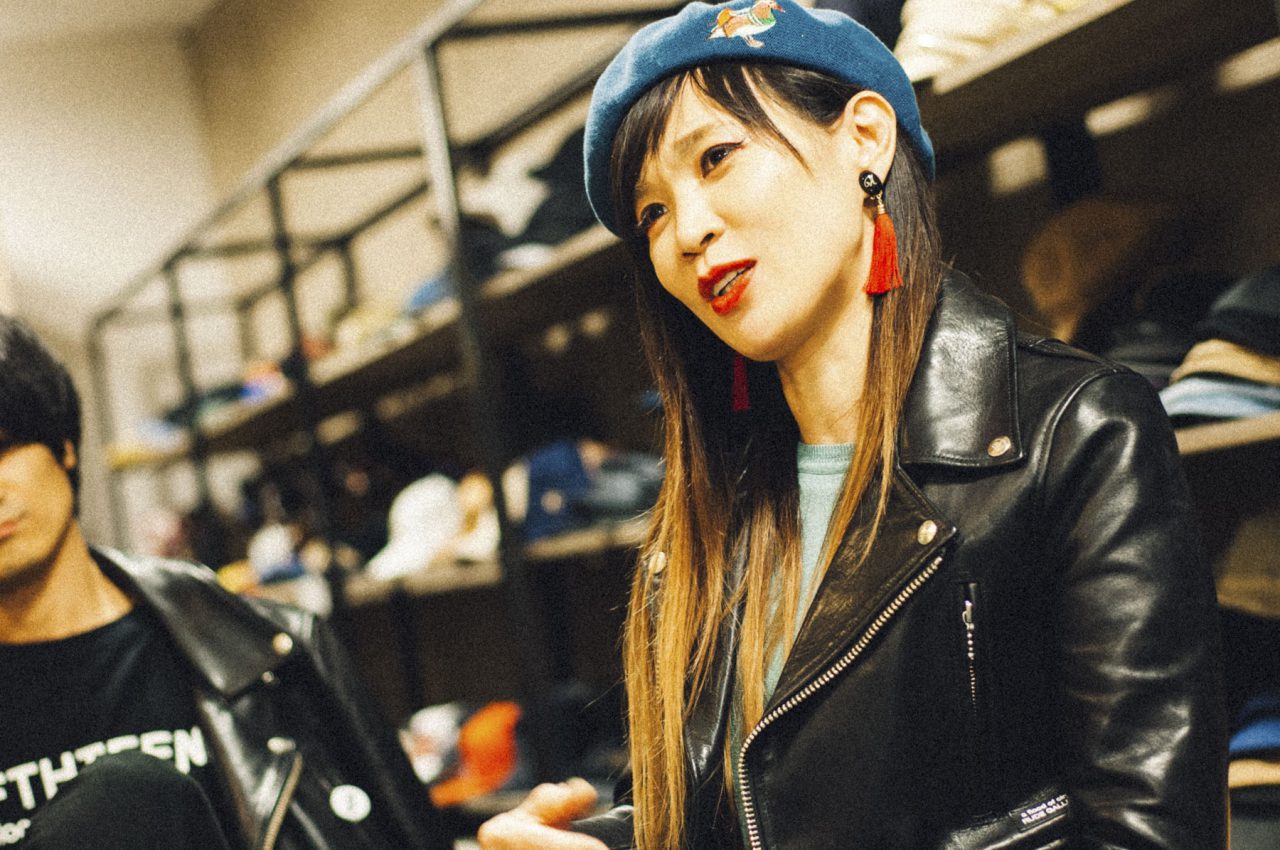
Even when we have a Tetsu joint concert, I often have deep conversations with the members who joined later, but the people who joined later tend to be very competitive. So I'm wondering how I can share this enthusiasm with the band (laughs). After five years, I've come to understand the core of Flood, so I want to make that core even more solid.
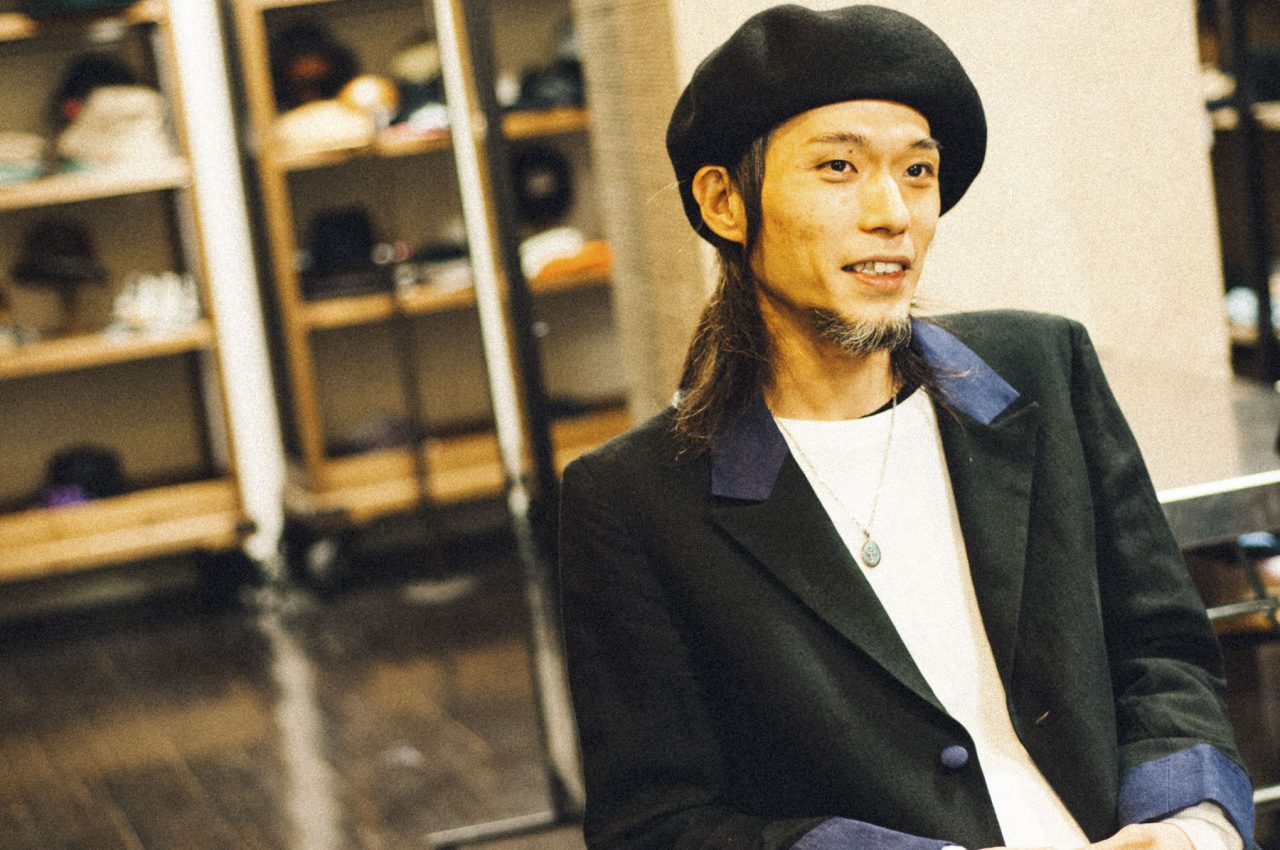
Sasaki: Until recently, a different member would change for each album (laughs).
Sasaki: Speaking of 2021, until now, after experiencing the tour, I was making songs with the feeling of "I wish there were more songs like this," but now the audience has to wear masks and see in a fixed frame, so it's boring to make songs based on that premise. So, next time, I would like to make a recording that will allow us to have the best live performance whether the audience moves or not, and in other words, I feel that it will expand because we don't have to think about the recording based on the live standard. We are currently working on a project to get various people to write songs for our 15th anniversary ('GIFT ROCKS' scheduled for release in August), and while we have participated in tributes, covered bands we have played against, and created the core of Flood, the past few years have also been a period when we have been inspired by bands close to us, so I would like to express that in the recording.
"Being able to wear hats of various shapes is like being able to use more magic in a role-playing game, so I like it." (Tetsu)

HISAYO: Almost all the hats I've bought in my life are from CA4LA, and I have about four of the same style. I never wore them before, but after joining Flood, I was able to find something that suited me. It was my first time wearing a beret, and at the exhibition, everyone flattered me, saying, "It looks good on you, it looks good on you," so I started wearing one.
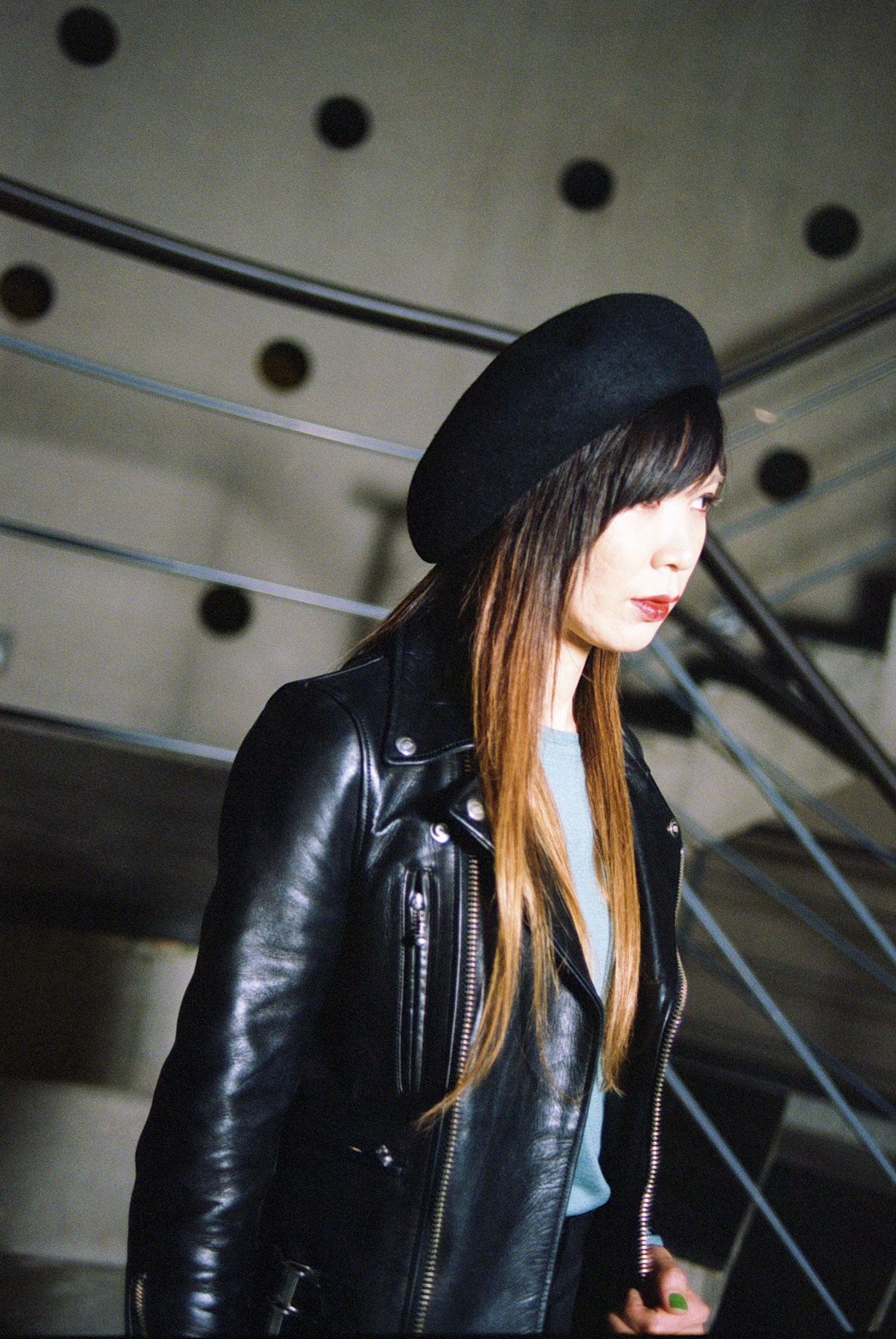
Akimoto: It really suits you.
Tetsu: I think that hats don't look good on you if you don't keep wearing them. When I was in elementary school, there was a kid named Shogo-kun who looked great in cap, so I tried wearing one too, but at first I thought, "It doesn't suit me," and people around me said the same thing. But after I kept wearing it, no one said anything about it.
Akimoto: That's a really good point. It's important to keep wearing the same thing, and at first everyone makes fun of you.
HISAYO: That happens when you try on clothes. Same with sunglasses.
Akimoto: Then some people would get embarrassed and quit, but Tetsu-san continued to wear it.
It's like leveling up in Tetsuro Play. When I first wore the beret, people said it made me look like a manga artist, but after wearing it for a while, it gradually started to feel right. I like being able to wear hats of all different shapes, because it feels like I have more magic to use.
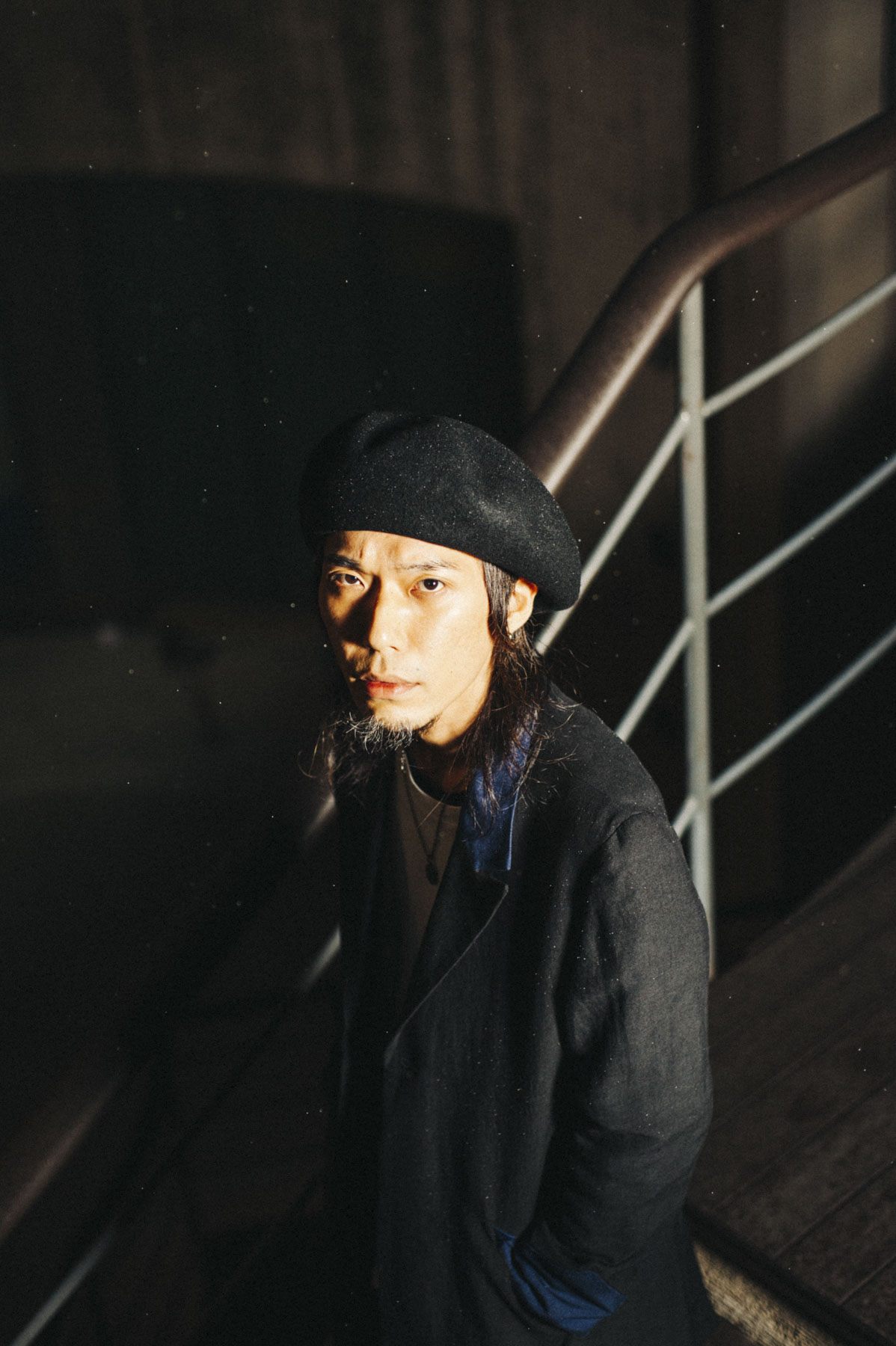
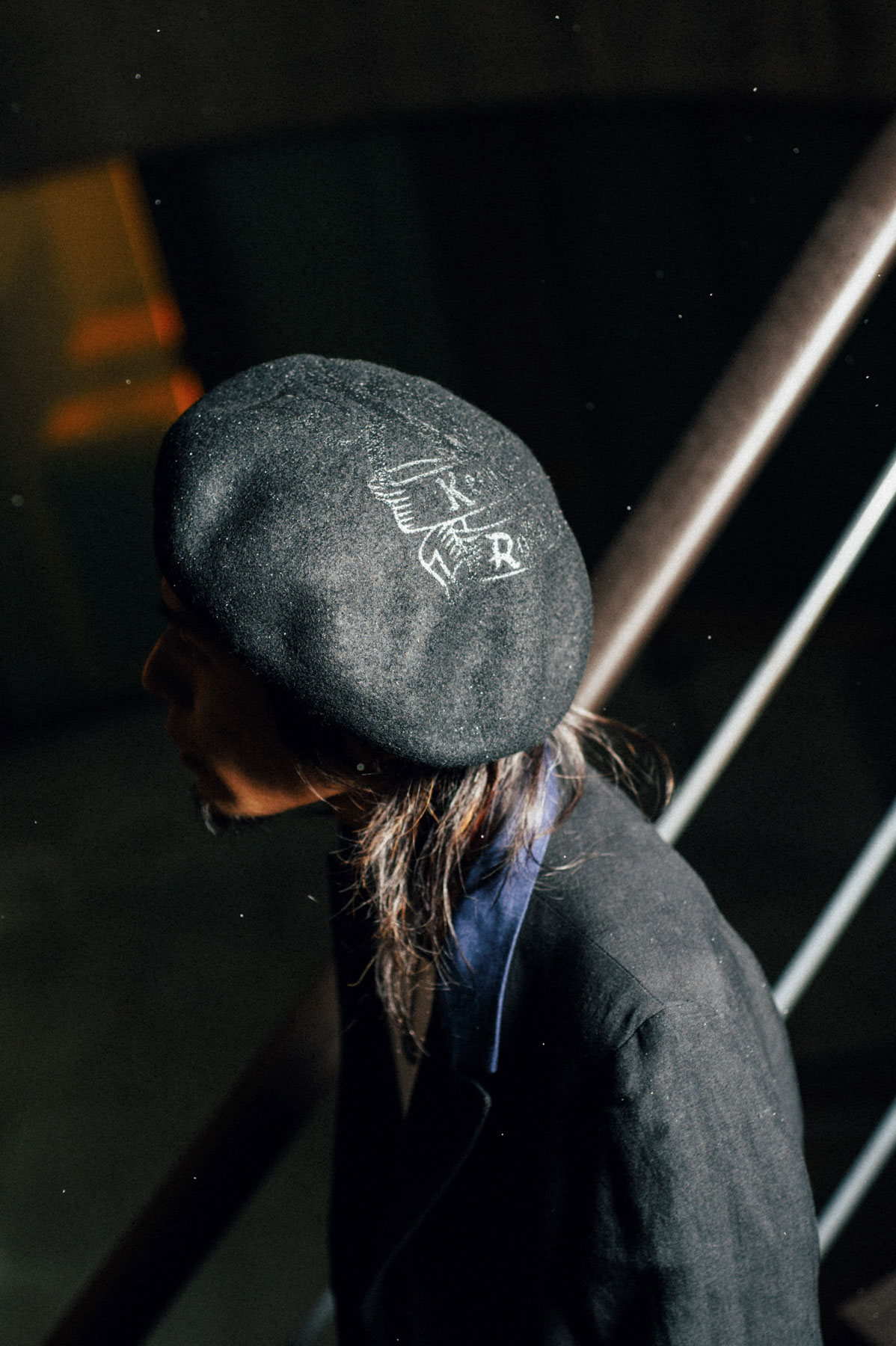
Watanabe: I didn't wear it much before, but when I went to see the Northern Lights in Finland in the middle of winter, it was so cold that I bought a bomber jacket from CA4LA and thought it looked cool. Once I started wearing one like that, it felt like a switch had been made in me, and I started wearing one quite often.
Sasaki: I've been buying one almost every month since about two years ago (laughs).
Sasaki: There's a guy named Nakashima who designs Flood's jackets and stuff, and he was also the one who did the Michelle jackets. I became friends with him, and one day we started talking about the movie "Uncut Gems." It's a movie distributed by A24, and when we were talking about how "A24 movies are good," one day he gave me an A24 cap as a present. I hadn't worn one at all until then, but when I went to Memphis solo, the legendary American musicians were wearing hats, and I thought it would be great if it was close to that feeling. From then on, I fell in love with it all at once... and once I want one, I can't resist (laughs).
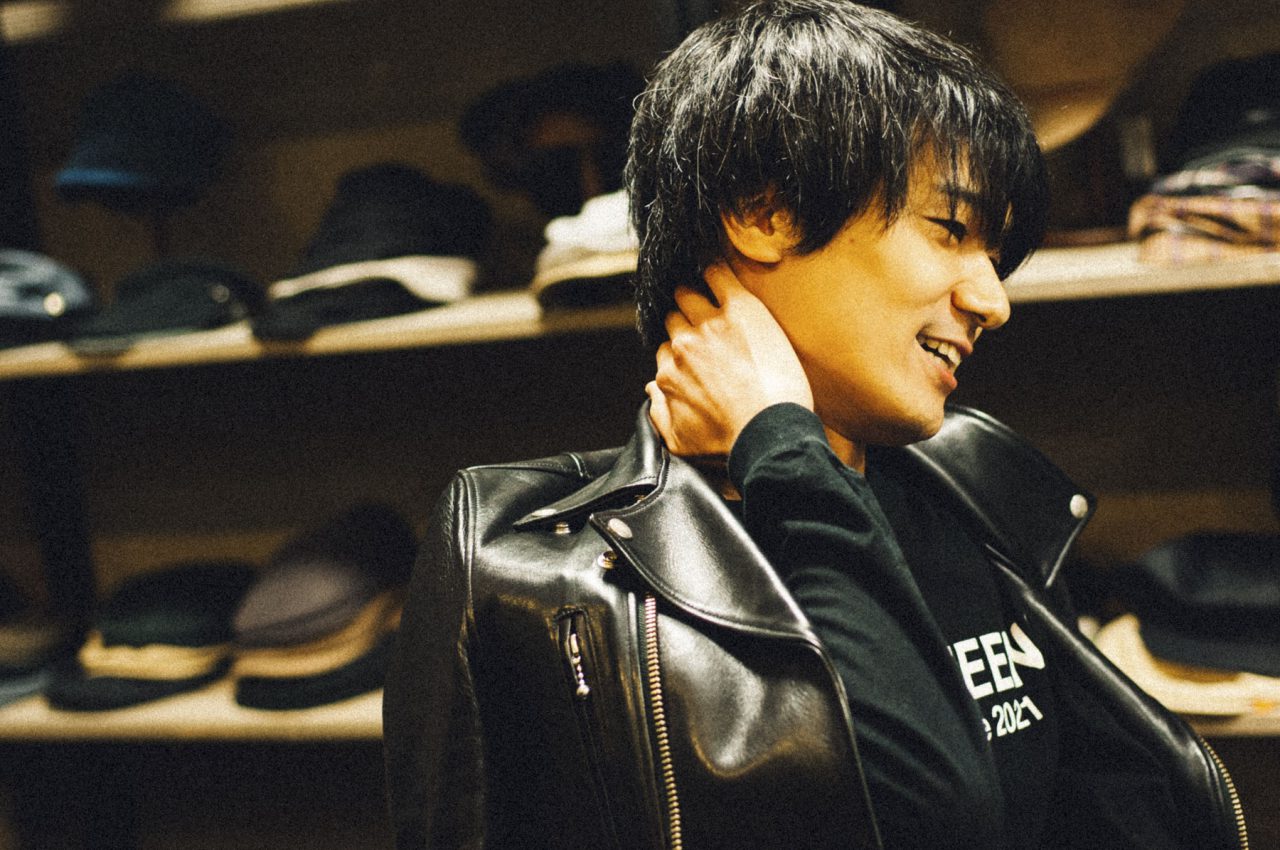
Before I met Tetsu Sasaki, there was a time when I was too concerned with how Flood should be, and I couldn't write songs at all. But I thought I needed to be more free, and from that time on, my songwriting and fashion became more free, and my feelings became more free.
"I have aspirations like, 'I want to be like this,' but I also want to create something that doesn't exist yet. If I create something that doesn't exist yet and someone says, 'That's great!'" (Sasaki)
Tetsu: I wanted a beret or casquette, and I was wondering what to do, but when I went to a meeting, I decided on a beret because I felt like it at the time. I thought it would be cool if it had color on the inside when you took it off, so I made it with a shiny lining.
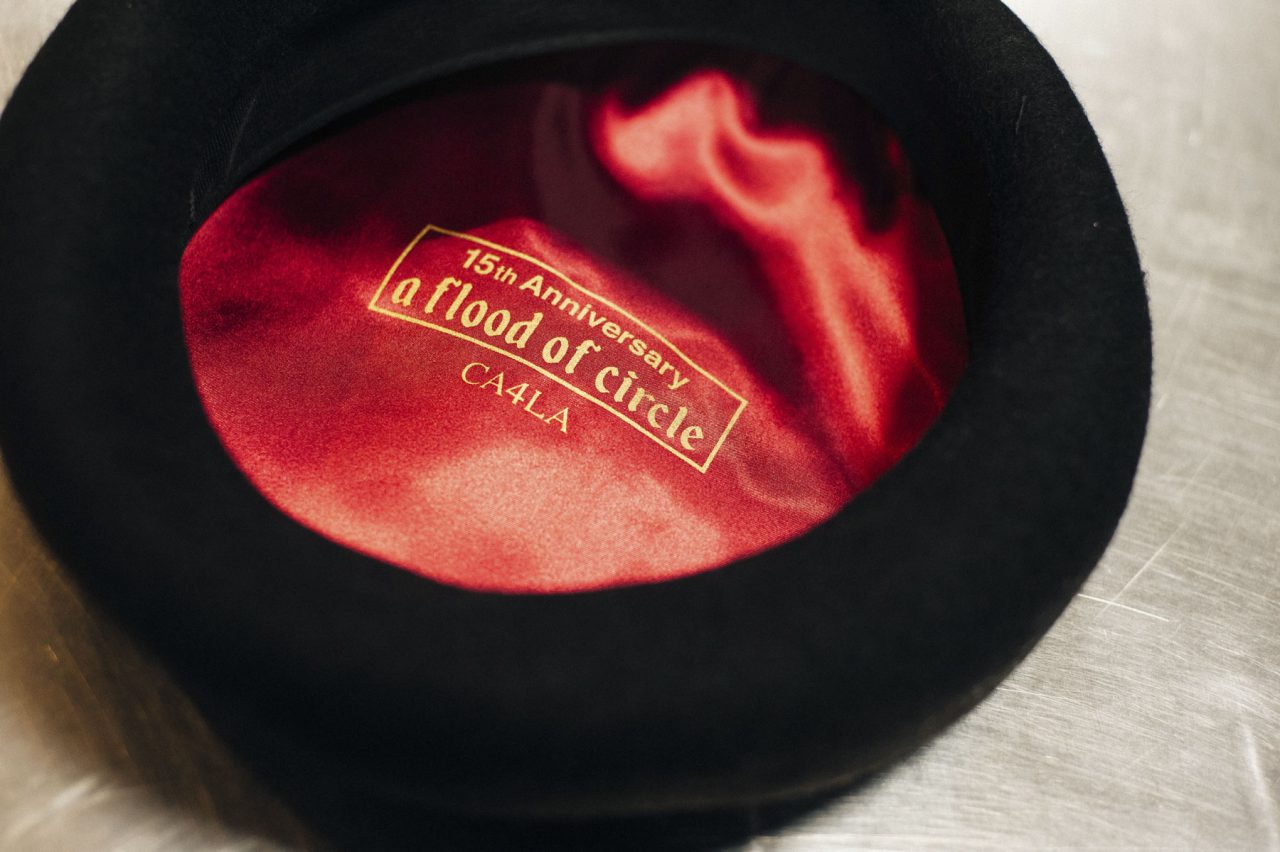
Akimoto: Fedora hats and the like have linings, but not many people have linings in their berets, so it looks really cool. The logo is also very well thought out, and the design is really cool.
I thought it would stand out if the light hit it.
Akimoto: I deliberately printed it in black, so even if you can't tell at first glance, you can see it because of the gloss. I think it's easy to wear even for people who have never worn a beret before. And the person who made it looks great in it. This is also important (laughs).

HISAYO: I'm wearing clothes here that I would never have worn if I hadn't joined Flood. I think they're pulling my mood, like "this outfit is perfect for this music," and when I play music that's different from Flood, I purposely change to completely different makeup and clothes, which helps to push the sound I make.
Watanabe: I think that music and fashion have something in common, that they don't die even if they're not there. I think they're similar in the sense that they transcend food, clothing, and shelter, but because music is my occupation, there are aspects of it that I can't see with pure eyes. On the other hand, fashion is one of the few things that I can honestly say, "This is cool!", and it's very valuable.
Akimoto: On the other hand, from a fashion person's perspective, music is like that. So I think that in a good way, we complement each other.
Sasaki: I just heard you've been doing this for a quarter of a century, which is incredible (laughs).
Next year will be the 25th anniversary of Akimoto CA4LA. "Rollers Anthem" is a really great song, and when I heard the lyrics, I wanted to keep doing it. I'd be happy if we could do a second and third collaboration.
It looks like Watanabe will start saying what he wants again (laughs).
Akimoto: Creating what you want is fundamental. I think it's the same for designers and musicians.
Sasaki: It's true that I have aspirations like "I want to be like this," but I also want to create something that "doesn't exist yet." If I create something that doesn't exist yet and someone says "That's great!", that would be the best.
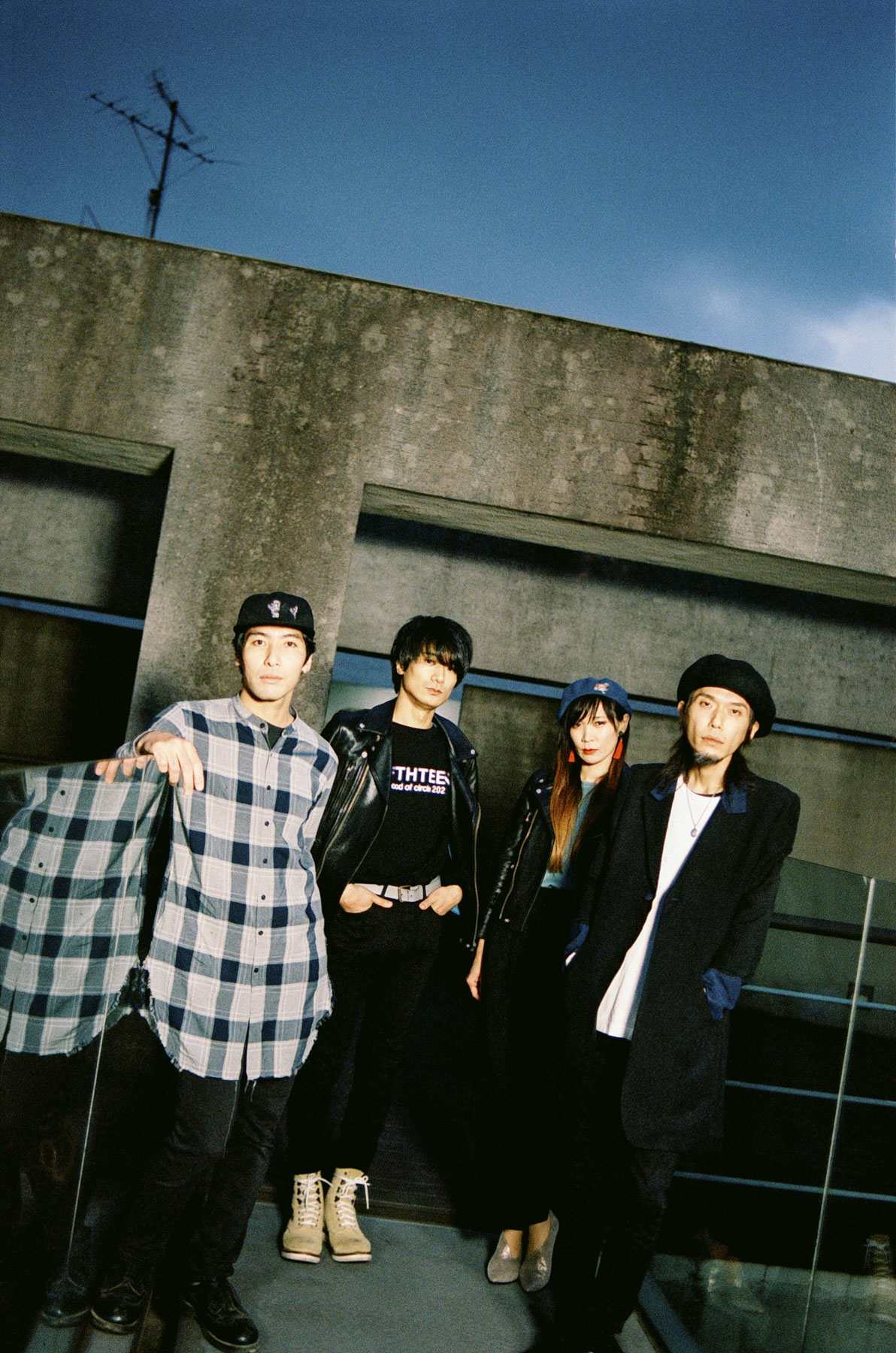

a flood of circle
Formed in 2006. A four-piece band consisting of Ryosuke Sasaki (Vo, Gt), Kazutaka Watanabe (Dr), HISAYO (Ba), and Tetsu Aoki (Gt). The band is constantly absorbing contemporary musical elements and evolving,updating the latest in rock and roll.
HP | TWITTER | Instagram | Facebook | YouTube

「a flood of circle FIFTHTEEN EXHIBITION」
Venue: The 6193 *1st floor of RUDE GALLERY TOKYO
Address: 1F Toho Building, 6-19-3 Jingumae, Shibuya-ku, Tokyo
Event period: Saturday, May 1st to Sunday, May 16th, 2021
Business hours: 12:00~19:00

